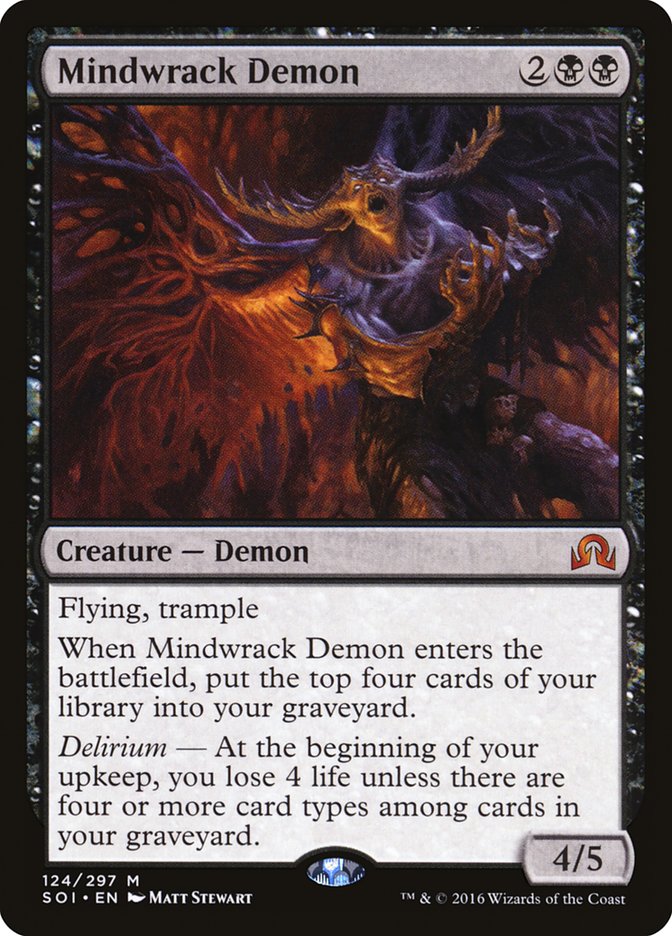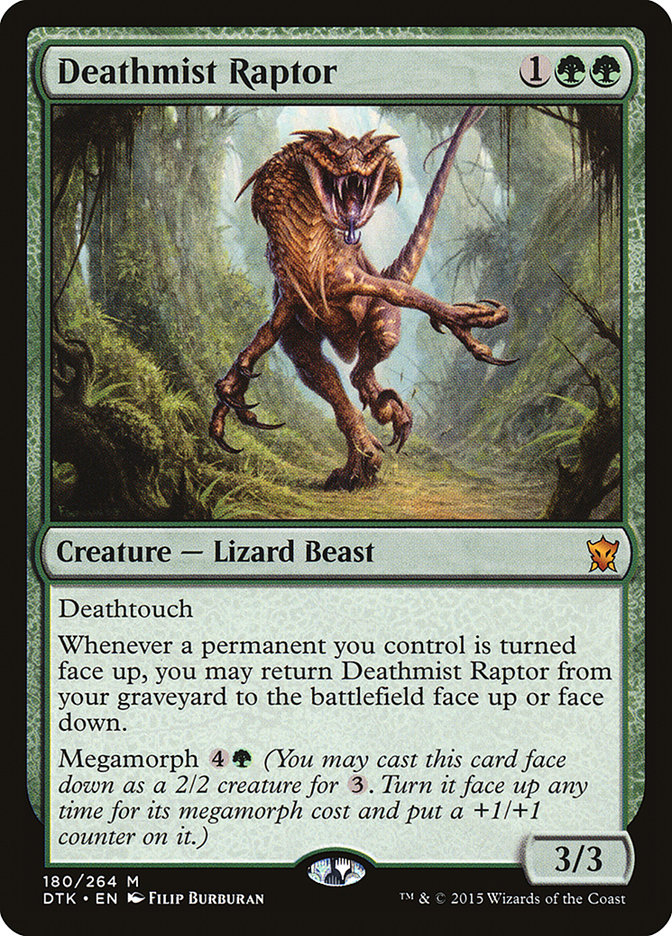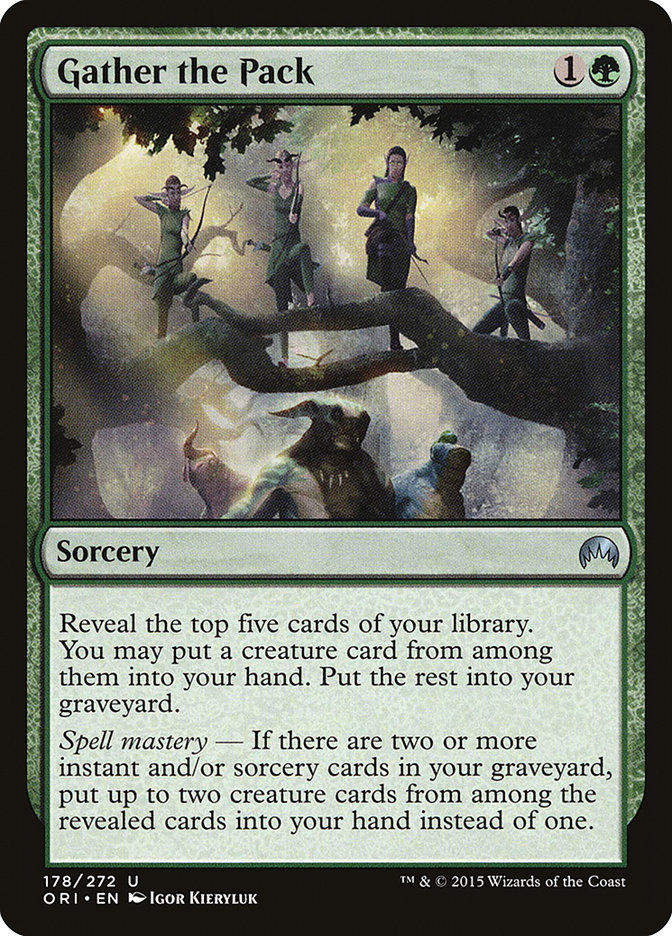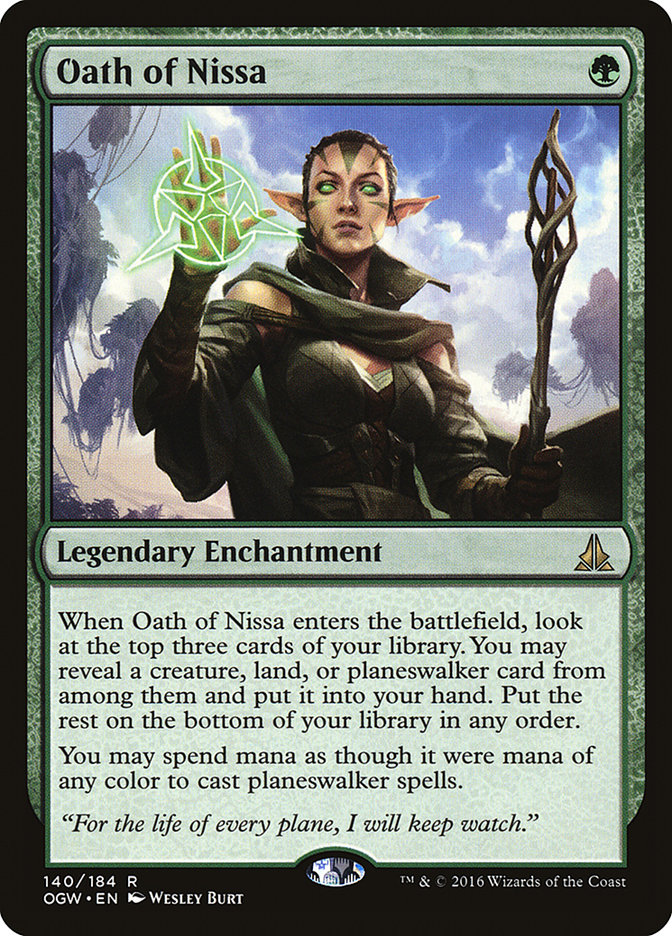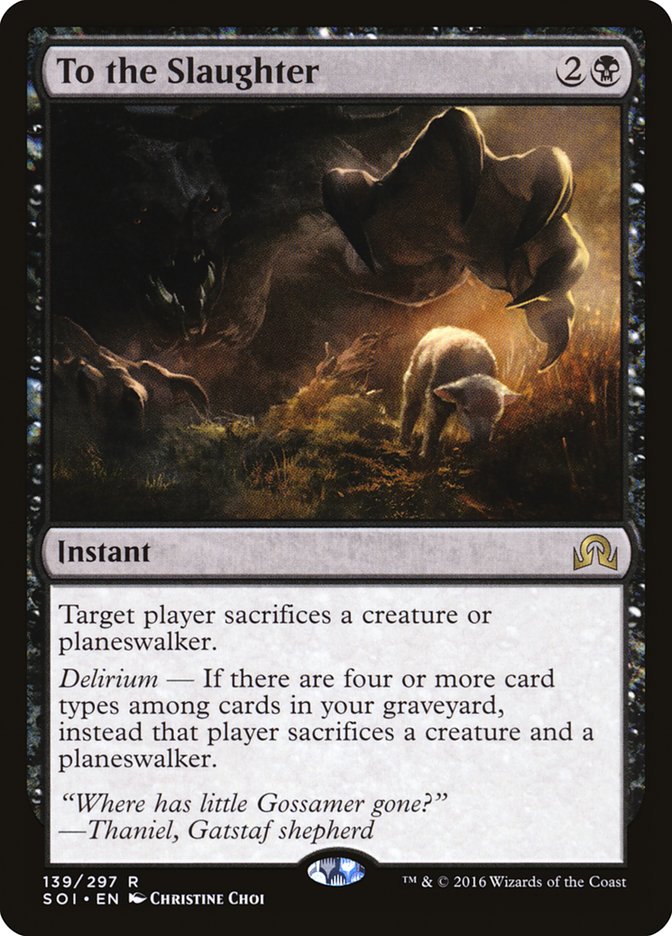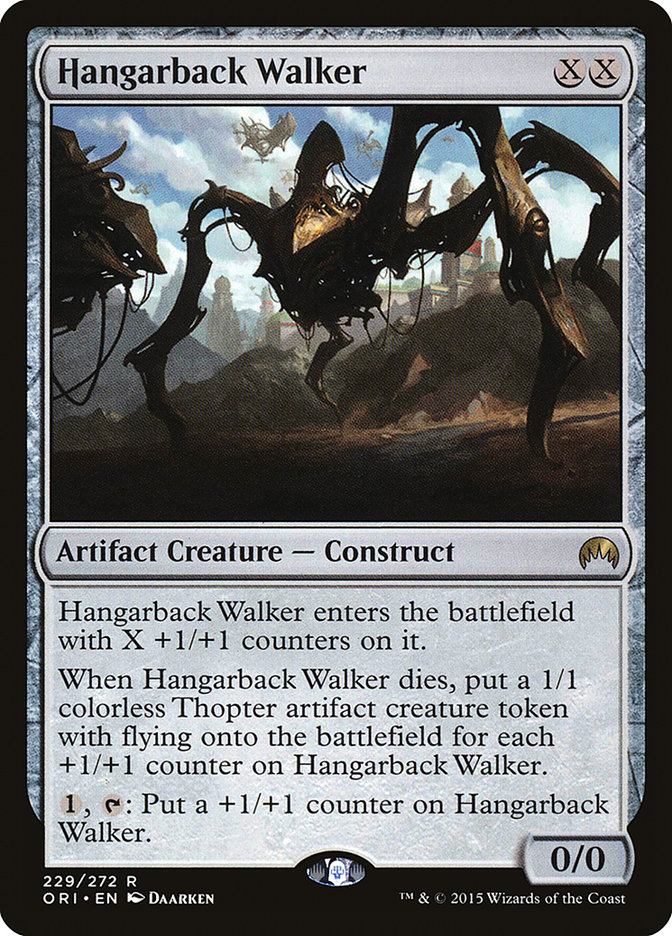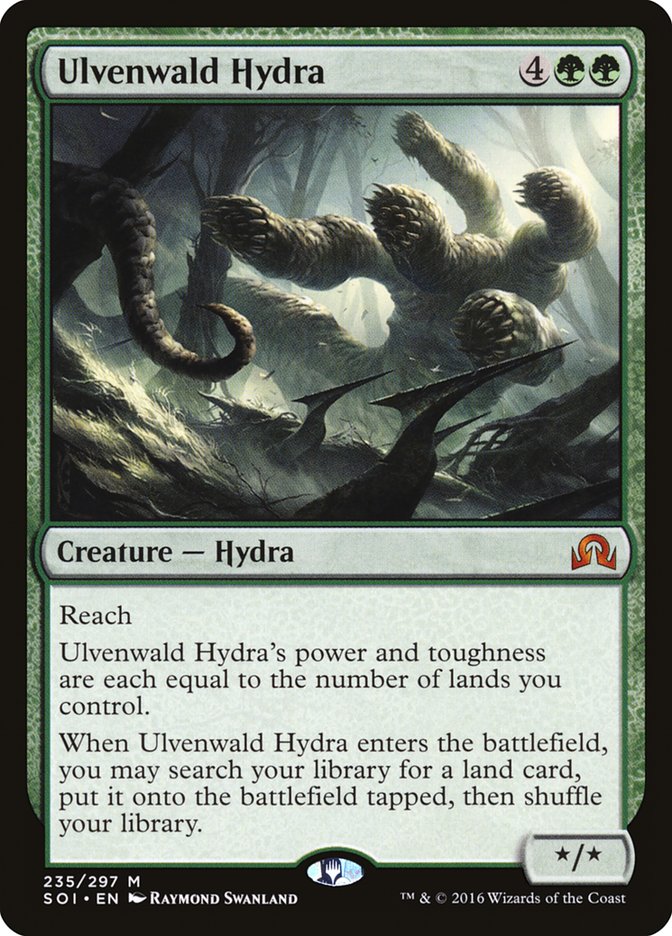The original Innistrad was my favorite Magic set of all time. It did everything right. It evoked great classic horror themes and managed to have them resonate through the gameplay itself. It told a great story, and also happened to be perhaps the single greatest Draft format of all time. Shadows over Innistrad has big shoes to fill in bringing us back to that place.
Thankfully, so far it looks like Wizards has done it. I only have one Prerelease weekend to judge the gameplay from so far, but the set is rife with the same sort of things I fell in love with about the original Innistrad. Or maybe I just have a soft spot for Werewolves. Or maybe I’m just happy to be back to the plane, since the last time we visited Innistrad was also the last time I won anything of significance.
In any case, I’m very excited to start working on the new Standard format ahead of the Pro Tour coming up in Madrid. I’m happy to be rid of the Khans fetchlands and all of the shuffling and grotesque manabases that came with them. It’ll be cool to see what happens when people actually start playing with the creatures and spells from Battle for Zendikar block rather than just the lands to support cards from Khans – not to mention the new cards from Shadows over Innistrad itself.
Speaking of those new cards, it probably comes as no surprise to anyone that the decks I’ve been brewing up for the new Standard use some of the green ones. I’ve never met a mana Elf that I didn’t like, and Deathcap Cultivator is no exception – even if he’s actually a Human. While he doesn’t offer mana fixing or mana ramp quite as good as his predecessor Rattleclaw Mystic, in return the Cultivator can potentially serve as a legitimate attacker or blocker against bigger creatures late in the game thanks to gaining deathtouch when you reach delirium.
Naturally, this led me to explore other ways to take advantage of delirium, and the one that jumps out immediately is Mindwrack Demon. I was fortunate enough to get a copy of Mindwrack Demon in my pool at the Prerelease, and I was suitably impressed. Even with just my Limited card pool, I found myself reaching delirium quite easily, especially with the self-mill of the Demon. In Constructed, it’s still an all-star. Mindwrack Demon can go toe-to-toe with Archangel Avacyn; fly over tokens to kill Gideon, Ally of Zendikar; and generally dominate the skies. A 4/5 flying trampler for four mana with an easily mitigated drawback sounds like a good deal to me, especially when you can leverage milling yourself for other benefits as well.
What other benefits are those? Well, enabling other delirium cards, of course, but also cards that want either themselves or other cards in the graveyard. The combination of Den Protector and Deathmist Raptor is one that I’ve played without any outside help on many occasions, but it’s particularly effective when you’re able to get Raptors to the graveyard through means other than having them die. Similarly, Den Protector loves to have extra options find its way to the graveyard throughout the game.
Another card I’m excited to try alongside Mindwrack Demon and friends is Gather the Pack. I briefly experimented with a Sultai deck with four copies of the card during BfZ Standard, and while the deck itself was bad, Gather the Pack felt strong. It helps dig for the right threats, and if you can turn on spell mastery, it generates card advantage in addition to selection. Both Mindwrack Demon and Gather the Pack fill your graveyard, and both want your graveyard full. Seems like a match made in heaven.
In addition to Gather the Pack, Traverse the Ulvenwald is another way to leverage a big graveyard, which at delirium just lets you tutor for whatever creature you want. That’s a lot more powerful than the selection offered by Gather, but it also doesn’t help enable delirium itself, and before you hit that point, it only serves as a mana fixer. Not really all that impressive.
Another option is Oath of Nissa. Oath of Nissa is interesting in that it can help dig to find you the right land, creature, or planeswalker, but it can also help fuel delirium. Being an enchantment makes it a valuable card to potentially diversify your graveyard from something like a Mindwrack Demon mill, and being a legendary enchantment means that you can naturally get one to your graveyard by casting a second copy when you already have one on the battlefield.
With all of these options, it goes without saying that there are going to be a lot of different ways to build a delirium deck. I want to throw out a few initial sketches that can serve as starting points, because I’m sure they’ll need a lot of tuning to find the balance for how many of each card type and how many of each enabler and payoff are right.
So let’s get started, shall we?
Creatures (20)
Planeswalkers (2)
Lands (23)
Spells (14)

This is just a straightforward aggressive take on delirium, aiming to put on pressure early with Sylvan Advocate, Deathmist Raptor, and Mindwrack Demon and keep that pressure on by refueling with Den Protector and Gather the Pack. There are only two copies of Traverse the Ulvenwald and no singletons to tutor for since the deck aims to run in a fairly streamlined fashion, but that could easily be a mistake. Don’t worry. We’ll take a look at that possibility momentarily.
The removal mix is complicated, both because of trying to have the right mix of answers to the various threats you might expect and also due to the need to have enough different card types for delirium. Ultimate Price and Grasp of Darkness seem like the best actual removal spells to me, with Price coming out ahead because it kills opposing Mindwrack Demons as well as Archangel Avacyn. It’s pretty embarrassing against Eldrazi, but the hope is that Mindwrack Demon and discard effects can help push through there.
To the Slaughter is interesting because it can deal with both Dragonlord Ojutai and Jace, Vryn’s Prodigy (sometimes at the same time), but it seems too bad to play maindeck in significant numbers if token decks are at all popular. I certainly like it as a sideboard option that hedges against a lot of the different threats you might face out of control and midrange decks, though.
Speaking of sideboards, this is mostly just a list of ideas more than anything. Sideboarding with delirium may end up being a tricky matter, since you need to keep in mind the balance of card types in your deck at all times. I certainly don’t claim to understand it yet, but I wouldn’t be surprised to discover that the right sideboarding involves swapping out blocks of cards for similar types in the sideboard, or perhaps bringing in entirely new types to support some that might be leaving.
I’ve actually given some thought to playing Hangarback Walker in a deck like this, despite the card itself having little synergy with what’s actually going on. The simple fact that it counts as both an artifact and a creature in your graveyard has to have some degree of value. If aggressive decks in the format look to be attacking on the ground rather than in the air, it will certainly be on my radar as a sideboard card.
While I like most of the cards in this deck, I am somewhat concerned that it just doesn’t do anything powerful enough. While Den Protector / Deathmist Raptor is a strong long-game plan, there are a lot of decks that it just doesn’t do very much against, and while Mindwrack Demon is very powerful, there are certainly going to be matchups where it just isn’t enough. The deck also suffers a bit from the classic midrange dilemma, in that it’s a mix of answers and threats that you just hope to draw up in the right quantities. It’s possible that a better take on delirum looks to go a bit bigger.
Creatures (20)
- 2 Den Protector
- 2 Nissa, Vastwood Seer
- 3 Sylvan Advocate
- 4 Mindwrack Demon
- 4 Deathcap Cultivator
- 2 Tireless Tracker
- 2 The Gitrog Monster
- 1 Ulvenwald Hydra
Lands (25)
Spells (15)

This moves away from Gather the Pack and Deathmist Raptor as a card advantage and recursion engine and toward Traverse the Ulvenwald and individually powerful threats.
The two threats here that I’m really excited about are Tireless Tracker and The Gitrog Monster. They both offer the potential for a lot of value going long, thanks to providing a steady stream of extra cards via your land drops. Whether that ends up being better than the potential for Deathmist Raptor recursion is, of course, an open question, and one that relies quite heavily on what the format ends up looking like. If we’re in a world full of token creatures and Silkwraps, Deathmist Raptor does almost nothing, and perhaps we want to dig deeper in our decks with Clues and Frogs.
Another card from Shadows over Innistrad that hasn’t gotten a ton of attention is Ulvenwald Hydra. It’s certainly no Primeval Titan, but it’s still a big body with utility attached. A single copy of Hydra and Rogue’s Passage alongside Traverse the Ulvenwald represents a lot of access to a way to break creature stalemates wide open. The fact that Hydra also has reach can help prevent your opponent from racing you with flying creatures, a situation that seems likely to be relevant in a world in which Vampires are a real deck.
Now, It’s also possible that the way I want to go about building both of these decks is completely wrong. My usual deckbuilding style heavily emphasizes creatures, and I can easily imagine that the right mix for a delirium deck is nothing like how I usually build decks, simply because it’s so important to have a wide range of types. So let’s try breaking out of that mold.
Creatures (15)
- 2 Den Protector
- 2 Nissa, Vastwood Seer
- 1 Greenwarden of Murasa
- 1 Kalitas, Traitor of Ghet
- 4 Mindwrack Demon
- 2 Tireless Tracker
- 2 The Gitrog Monster
- 1 Ulvenwald Hydra
Lands (25)
Spells (20)

This is a much more controlling take on delirium with a greater focus on early removal than pressure. The Traverse the Ulvenwald toolbox provides access to a lot of powerful options in a long game, which this version is much happier to play than either of the others. The higher density of spells compared to creatures and greater mix of overall non-creature cards likely increase the deck’s ability to quickly hit delirium despite reducing how effectively the deck can leverage the threat of an early Mindwrack Demon.
Read the Bones helps out the Tracker and Monster to provide fuel for a long game, and Greenwarden of Murasa joins the party as another recursion tool with a large body attached, which should let this deck grind with the best of them. Virtually every creature in the deck generates card advantage in some capacity!
As much as I may prefer attacking when I can, I can easily envision this more controlling direction working out better for delirium. While Mindwrack Demon is impressive as an early threat, the flexibility offered by Traverse the Ulvenwald in long games seems like it may end up ultimately being the real payoff for the mechanic. While aggressive decks can take advantage of the tutor effect – to ensure a Raptor chain keeps going, for instance – a more controlling build can accommodate more powerful options without gumming up its draws in the same way.
I’m looking forward to seeing what delirium decks show up at #SCGBALT. It’s the kind of deck that has so many possible builds, you could easily go crazy trying to find them all yourself. Though maybe that’s the idea all along…



